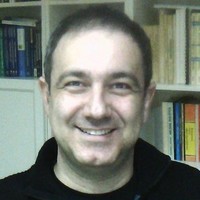
Biographical Information:
Dr Theodoros Samaras is a trained Medical Physicist, who has been working in radiation protection and dosimetry of non-ionizing radiation. His research involves the assessment of human exposure to electromagnetic fields in a broad frequency spectrum, ranging from extremely low frequencies (ELF) to millimetre wave (MMW) radiation. He has experience with the application of computational multiphysics techniques in the study of mechanisms involved in the interaction of electromagnetic radiation with the human body. He is also active in measurements to assess personal exposure, and has been involved in the deployment and management of sensor networks for the continuous monitoring of the electromagnetic environment.Abstract:
An overview of computational techniques in Bioelectromagnetics
Bioelectromagnetics is an interdisciplinary field of research that investigates the interaction of electromagnetic fields with living matter at all scales, ranging from the whole body to the single cell, in order to assess safety, identify new biophysical mechanisms that can be exploited in therapy or improve biomedical applications. However, cells, tissues and organisms exhibit a complex geometrical structure that entails several biological materials with different electric properties, which may vary according to changes in environmental and physiological conditions. It becomes easily understandable that the solution of Maxwell's equations to evaluate the electromagnetic field distribution inside living matter can only be accomplished using computational techniques. Of course, since the interaction of electromagnetic fields with all matter depends on many parameters, the most dominant of which is frequency, the use of the most appropriate technique for the case under study is important in terms of computational resources and accuracy. In this presentation we will show examples of computational electromagnetics applied across the non-ionizing electromagnetic spectrum for exposure assessment, i.e., the first step in risk assessment. The implementation of the same or similar computational techniques in biomedical applications, like thermal and non-thermal cancer therapies, or brain stimulation, will also be demonstrated. We will eventually touch on the area of microdosimetry that gas gained a lot of interest in recent years, with the imminent introduction of 5G cellular networks in the millimeter wave spectrum.